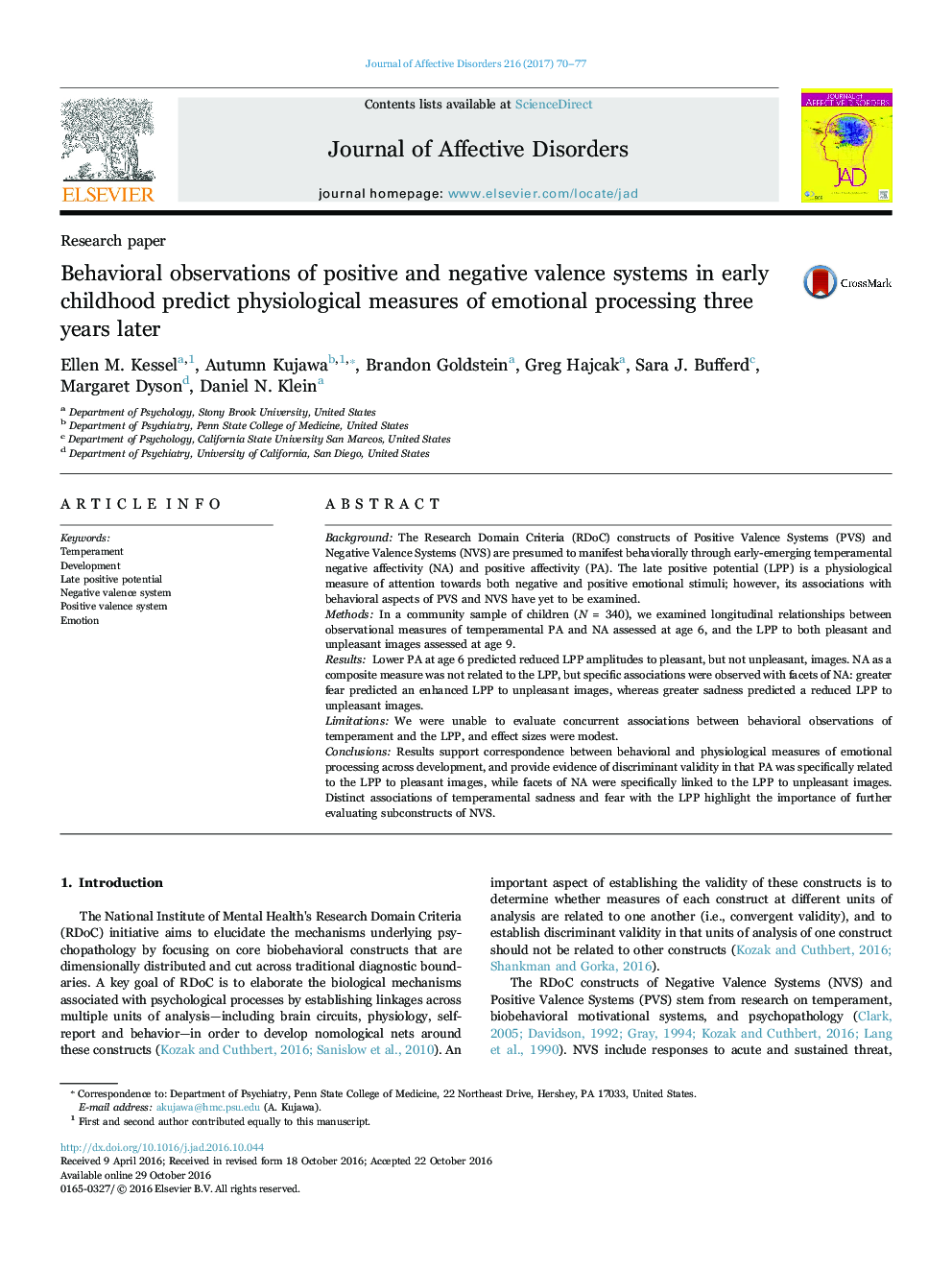| Article ID | Journal | Published Year | Pages | File Type |
|---|---|---|---|---|
| 5722308 | Journal of Affective Disorders | 2017 | 8 Pages |
BackgroundThe Research Domain Criteria (RDoC) constructs of Positive Valence Systems (PVS) and Negative Valence Systems (NVS) are presumed to manifest behaviorally through early-emerging temperamental negative affectivity (NA) and positive affectivity (PA). The late positive potential (LPP) is a physiological measure of attention towards both negative and positive emotional stimuli; however, its associations with behavioral aspects of PVS and NVS have yet to be examined.MethodsIn a community sample of children (N =Â 340), we examined longitudinal relationships between observational measures of temperamental PA and NA assessed at age 6, and the LPP to both pleasant and unpleasant images assessed at age 9.ResultsLower PA at age 6 predicted reduced LPP amplitudes to pleasant, but not unpleasant, images. NA as a composite measure was not related to the LPP, but specific associations were observed with facets of NA: greater fear predicted an enhanced LPP to unpleasant images, whereas greater sadness predicted a reduced LPP to unpleasant images.LimitationsWe were unable to evaluate concurrent associations between behavioral observations of temperament and the LPP, and effect sizes were modest.ConclusionsResults support correspondence between behavioral and physiological measures of emotional processing across development, and provide evidence of discriminant validity in that PA was specifically related to the LPP to pleasant images, while facets of NA were specifically linked to the LPP to unpleasant images. Distinct associations of temperamental sadness and fear with the LPP highlight the importance of further evaluating subconstructs of NVS.
